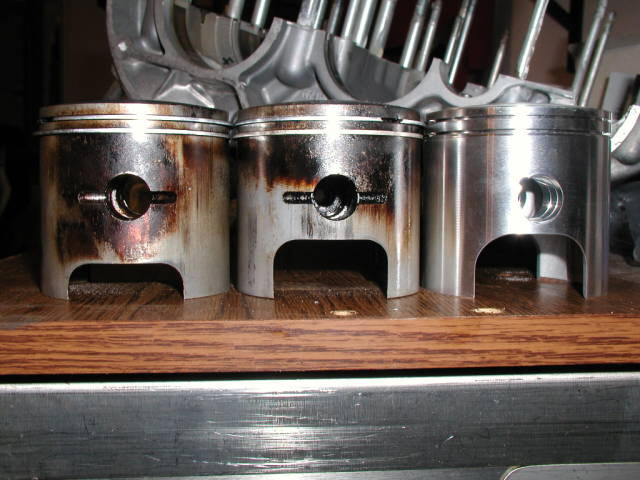
Piston Cutaway

The short cutaway was done to help stop skirt
collapsing. The higher cutaway stock pistons used to collapse the skirts fairly
regularly and in half the time of the low cutaway.
As far as how much cutaway is needed in the cylinder/piston, when the piston is
at BDC, the cut away for the transfers in the cylinder shouldn't protrude past
the cutaway in the piston.
The respected rule of thumb is that if the sleeve is
lower than the cut in the piston with the piston at BDC, then cut the sleeve, IF
there is sufficient sleeve to not cause strength weakening issues. On early type
sleeves, the area of the cut between the rear of the rear transfer cut and the
center transfer port divider should not be completely cut, but massaged for an
angle cut, more sleeve retained at the rear. This would give the somewhat added
strength you mentioned.
Second part is if the piston cut is lower than the sleeve cut, radius/polish the
cut in the piston and let it alone.
Me, I like the aluminum sleeve with Nic-A-Syl coatings more than a cast iron or
steel sleeve.
Even if the metals are forged, if they don't have
support, they go into plastic elongation (they bend, and stay bent).
One of the things the factory was trying to accomplish with the shallow transfer
openings on both the cylinders and pistons was to tame the beast down a bit.
Longer chassis, lower power levels = cushy riding.
I said that if a person wanted to ride an arm chair, let 'em get a Z1, if they
wanted to ride a fun bike, get an early H2. Factory didn't listen, to ANY of us
back then.